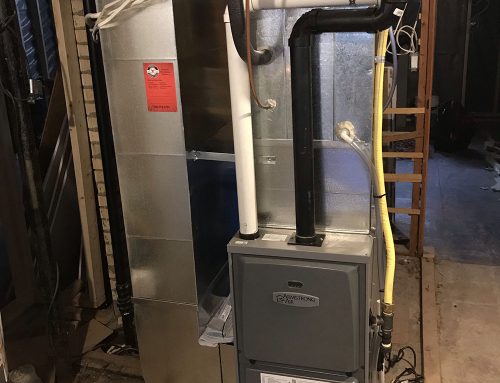Were you in search of content involving Plumbing Maintenance Guide for Tenants?

Taking care of pipes problems in rental homes efficiently is essential for maintaining lessee contentment and maintaining the residential property's value. Whether you're a property owner or a home manager, knowing exactly how to deal with these common troubles can save you time and money while making sure conformity with legal responsibilities. Right here's a detailed overview on just how to handle plumbing problems in rental buildings.
Document Whatever
Keep in-depth documents of all reported pipes concerns and the activities required to resolve them. Documentation must include dates, descriptions of the trouble, interaction with renters, and invoices from contractors or plumbings. This info can be crucial for insurance claims, tax deductions, and legal defense.
Use Qualified Professionals
Constantly make use of licensed and insured professionals for substantial pipes repairs and installations. This makes sure that the job is up to code and can help prevent obligation concerns in case of accidents or more damages. It likewise reassures lessees that repairs are being taken care of professionally.
Establish Clear Communication
Encourage lessees to report any pipes concerns as quickly as they take place. Offer multiple communication channels such as phone, email, or a lessee site to make it easy for them to connect. Motivate responses to these reports can prevent small issues from rising into significant problems.
Educate Tenants
Inform your tenants concerning what makes up a pipes emergency situation and what does not. Supply guidelines on just how to manage small issues themselves, such as using a bettor to unblock a toilet. Additionally, inform them regarding what they must avoid putting down drains pipes to prevent obstructions, such as oil, coffee grounds, and non-biodegradable items.
Routine Maintenance
Carry out a routine upkeep timetable for all pipes systems in your leasing properties. Normal checks can help identify and resolve problems like leaks, sluggish drains, or corroded pipes prior to they come to be severe. Consider employing a professional plumbing professional to examine the residential or commercial properties each year or semi-annually.
Quick Reaction to Emergency Situations
Have a plan in place for replying to plumbing emergencies. This need to include having the get in touch with details of reputable pipes services that provide 24/7 emergency situation repairs. Quick action is vital to minimize damage in scenarios like ruptured pipelines or severe leaks.
Preventive Upgrades
Take into consideration updating older plumbing systems and fixtures to a lot more modern, effective designs. This can reduce the frequency and intensity of pipes issues and lower long-lasting upkeep prices. It's also a selling point for prospective occupants that value upgrades and contemporary functions.
Occupant Move-Out Inspections
Conduct thorough plumbing checks during move-out assessments to make certain that any problems are determined and resolved prior to a new renter moves in. This avoids conflicts with new occupants over pre-existing problems and makes sure the property remains in leading problem.
Understand Legal Responsibilities
Know your legal obligations relating to pipes and basic building upkeep. Most jurisdictions call for landlords to ensure their residential or commercial properties are habitable and that all pipes systems remain in good working order. Failing to attend to major problems quickly can lead to legal actions from renters.
Renter Compensations
If a plumbing concern calls for instant interest and the tenant resolves the concern by themselves, have a clear policy in place for reimbursing prices. Make certain occupants understand they ought to get previous approval for higher-cost repairs unless it's an outright emergency.
Final thought
Handling pipes problems in rental homes requires an aggressive method and good interaction with renters. By remaining on top of upkeep, responding without delay to emergencies, and making use of certified experts, landlords can maintain their residential or commercial properties in superb condition and maintain excellent relationships with tenants.
How to Handle Water Damage in a Rental Property
What is Water Damage?
Water damage is harm or destruction caused by water entering areas where it is not supposed to be. It can be caused by a variety of sources and can manifest in different ways. The most common examples of water damage include:
Leaking roof Plumbing leaks Appliance malfunctions Poor drainage Flooding Sewage backup Condensation Tenant negligence HVAC system issues Frozen pipes Is water damage dangerous?
Water damage itself is not inherently dangerous, but it can lead to various hazards and health risks if not promptly and properly addressed. The severity of these risks depends on the extent of the water damage, the source of the water, and how quickly it is mitigated.
Some potential dangers associated with water damage include structural damage, mold and bacterial growth, electrical hazards, water contamination, and pest infestations. In situations where mold and mildew have gone unaddressed, mold can start to develop within 24-48 hours of water exposure, and this can impose a serious health risk to tenants. In particular, mold spores and damp conditions can lead to respiratory issues and even make existing health problems worse, such as allergies, asthma, or immune disorders.
Water Damage in an Apartment - Who is Responsible?
If the water damage is caused by the tenant’s negligence, the tenant is responsible for the cost of repairs. If the water damage is caused by a defect in the property, the landlord is responsible for the cost of repairs. If the water damage is a result of natural causes, such as excessive rain, then the landlord is responsible, since the water intrusion likely occurred due to a defect in the property. Landlord Responsibility water damage in rental property
Since maintaining habitability is the landlord’s legal responsibility, landlords are responsible for any resulting structural damage caused by water damage. These structural damages may include damage to walls, roofs, ceilings, and flooring. If water damage has affected the rental property’s original structure, the landlord is responsible for repairing or replacing those materials. Therefore, landlords should have property insurance that covers the structural components of their rental property so that they can receive help with the costs of covered events.
Preventative measures can also help landlords avoid massive renovations. Preventative maintenance may include conducting regular inspections to identify and address potential water damage before it becomes a major and urgent problem.
If a landlord fails to meet their responsibilities regarding water damage, it can lead to legal disputes and potential liability. Tenants who believe their landlord is not addressing water damage issues in accordance with California law can seek legal advice or contact local housing authorities for assistance.
https://www.goodlifemgmt.com/blog/water-damage-in-a-rental-property/

Do you enjoy reading about Who is responsible for plumbing maintenance? Make a comment directly below. We would be delighted to find out your responses about this blog entry. We hope that you visit us again before long. Enjoyed our entry? Please quickly share it. Let other people locate it. Thank-you for taking the time to read it.